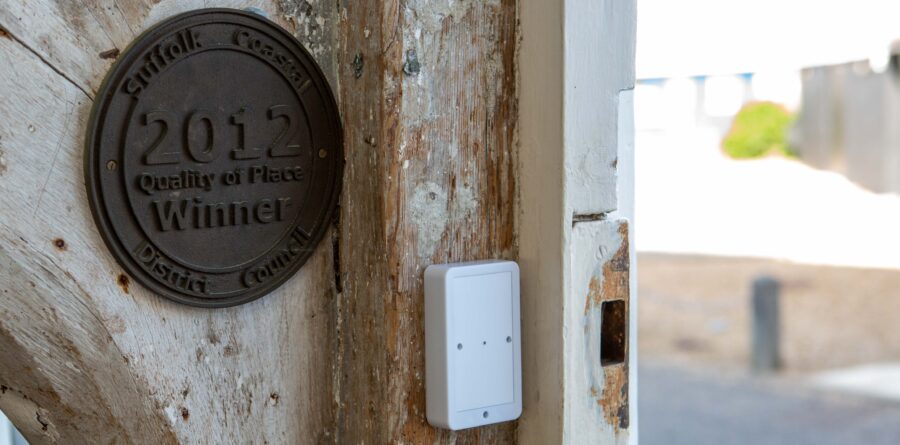17/10/2023
AONB transport grant will help schools visit Woodbridge Tide Mill Museum
Contributed by Woodbridge Tide Mill
19/11/2022 - Woodbridge Tide Mill

Woodbridge Tide Mill Museum has installed a new Weather Station. Thanks to support from Suffolk County Council, visitors, online and in person, will be able to see data and trends about weather, river temperature, tide height, humidity, air quality and visitor numbers.
Long Range Wide Area Network (LoRaWan) technology has been developed through the Innovation Network, a Suffolk and Norfolk-wide initiative free to use for schools, business, the public sector and the public which had been developed with funding from New Anglia Local Enterprise Partnership.
It is similar to mobile phone technology for sending small pieces of information from a sensor to a gateway which then delivers it to the internet.
Councillor Matthew Hicks, the leader of Suffolk County Council, said: “We are delighted we have been able to help such a well-known Suffolk landmark as the Woodbridge Tide Mill as this is exactly the sort of project the Innovation Network is designed for.
“The information gathered will be of great interest to visitors and residents alike and is a real boost to conservation.”
Visitors can see the information about the internal environment on a display inside the Mill itself. Further information is also available on a dashboard via this website url. It is planned to have a screen in the Mill that will show what the weather is, how high the river is, how warm the tide mill pond is and what the air quality is like in the Mill. It will also count visitors entering and leaving the building using sensors either side of the door.
The air quality sensor is particularly useful because when milling flour, you can monitor the flour dust level as well as the level of carbon dioxide. The temperature of the water in the Mill Pond will be measured which may help under the factors which affect the growth of sea lettuce that can halt milling.
A useful consequence of recording these measurements is that they will build up over time to form a database from which trends will become apparent. The tides and temperature will be tracked over time. One sensor will measure the height of the river. From this we will be able to see trends in high and low tides.
There are also a couple of cabinets with precious exhibits (Millers Logbook etc) so sensors will be placed inside to monitor the humidity and temperature to make sure it is being kept at an appropriate level to ensure these valuable exhibits are available for future generations to see.
All articles on this news site are submitted by registered contributors of SuffolkWire. Find out how to subscribe and submit your stories here »